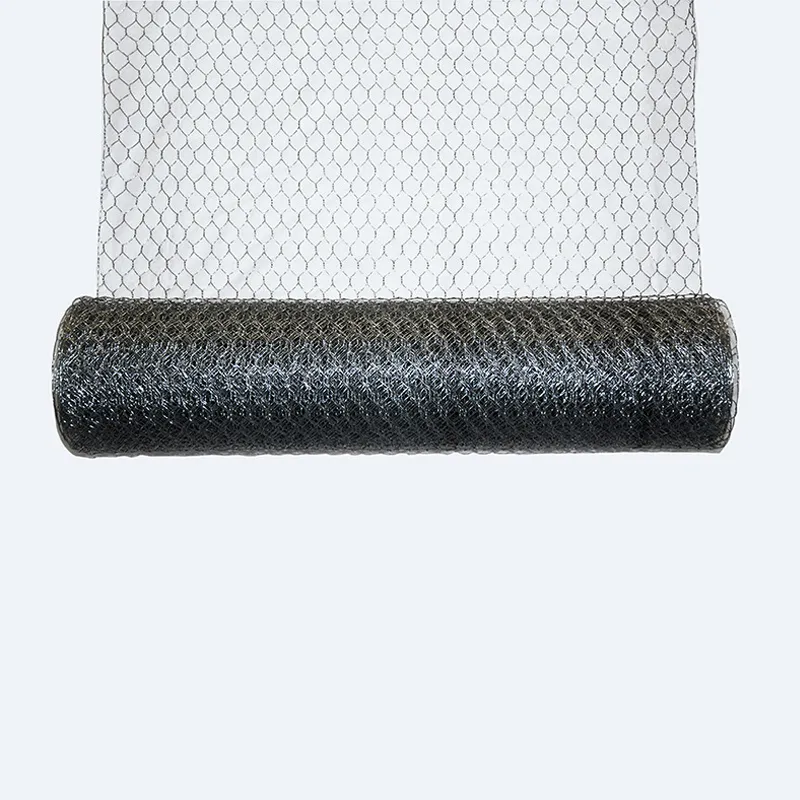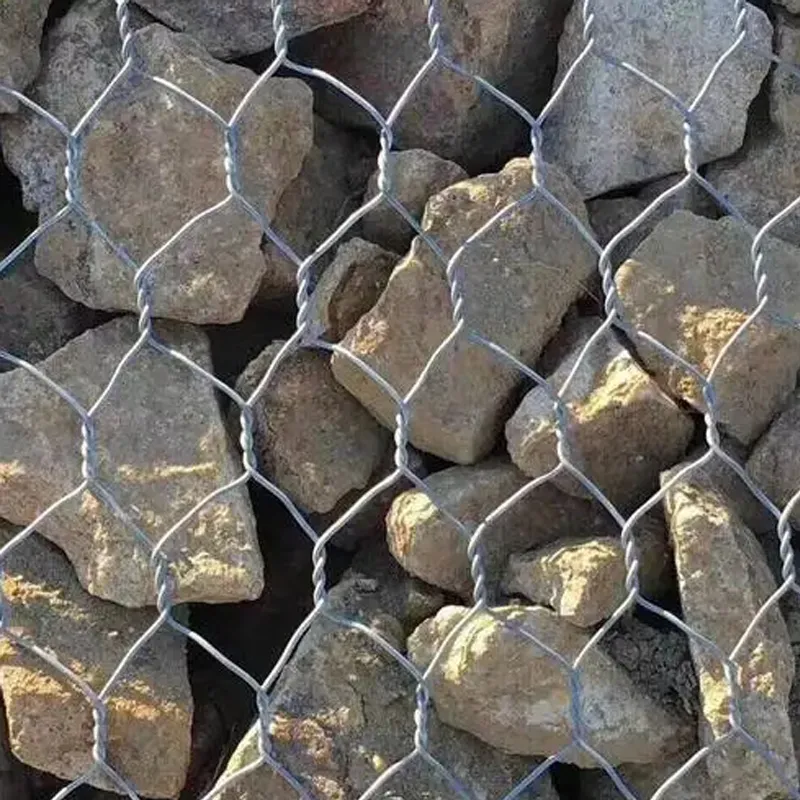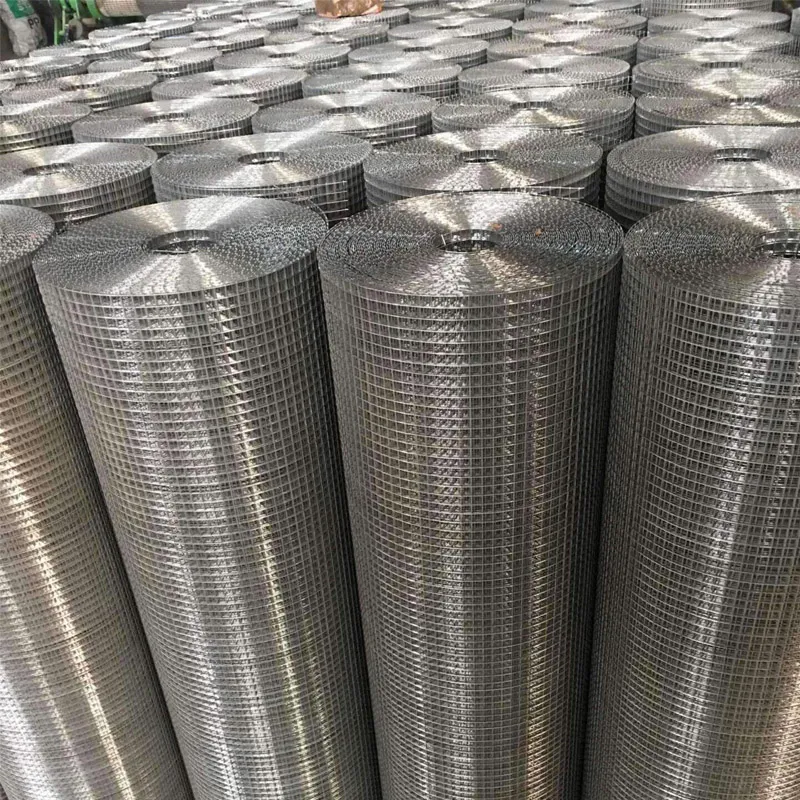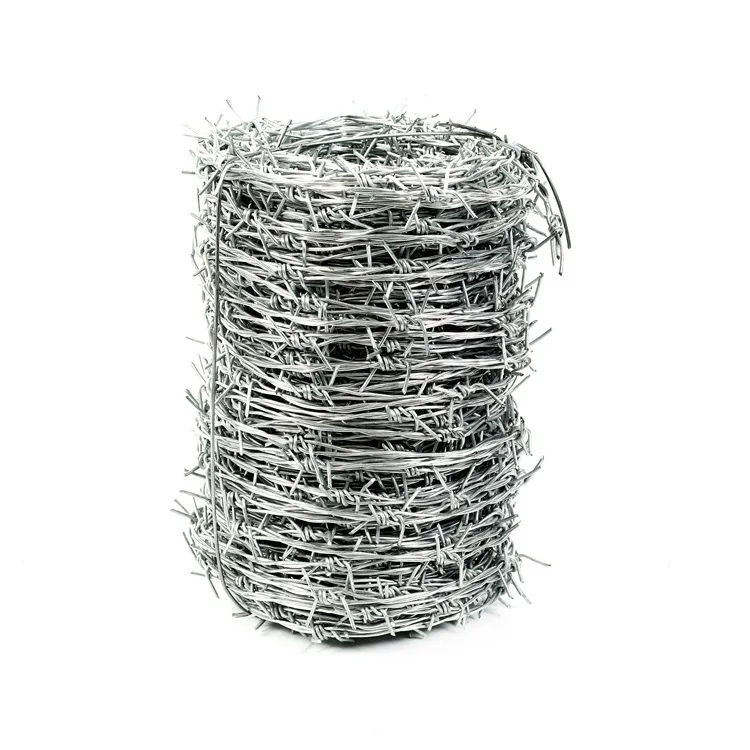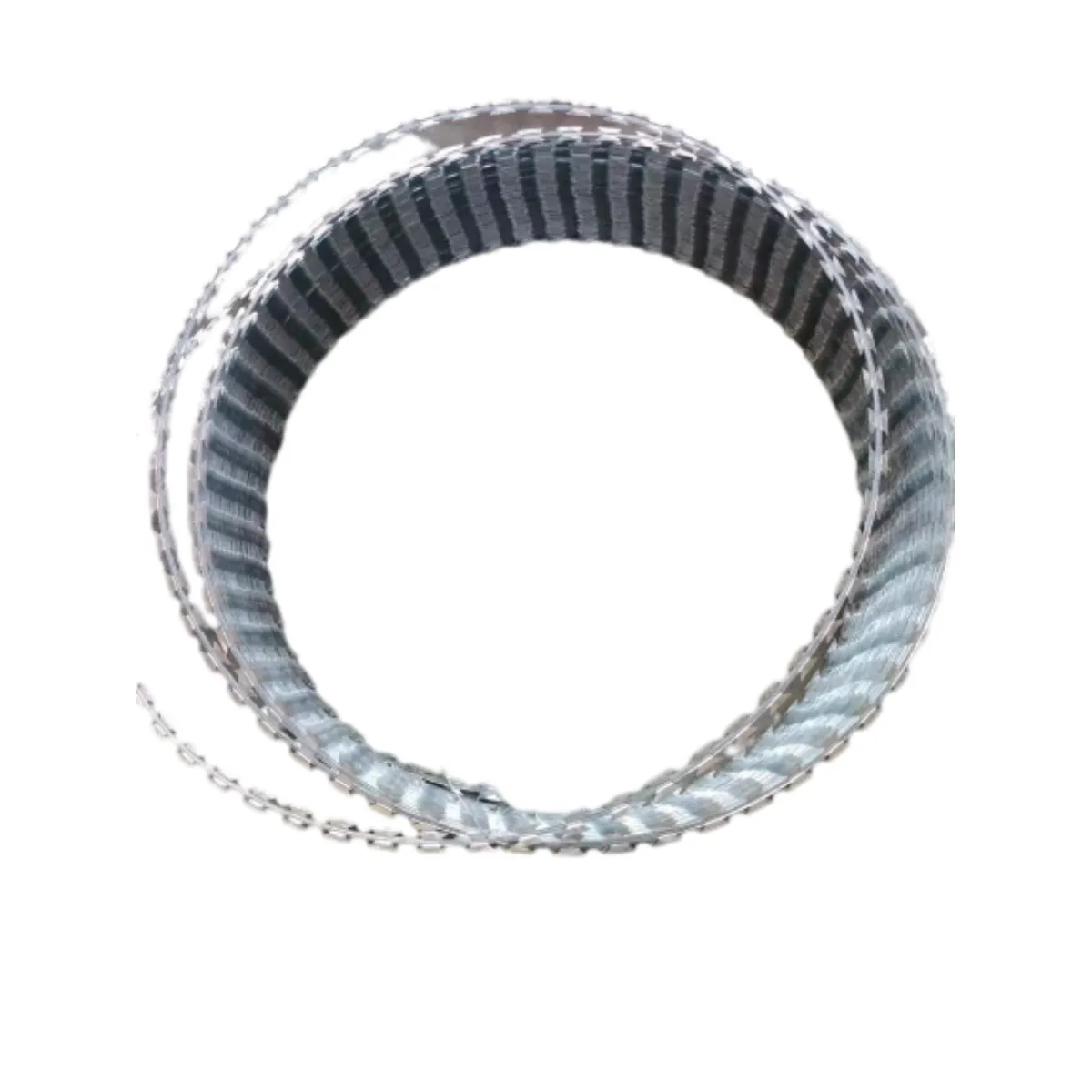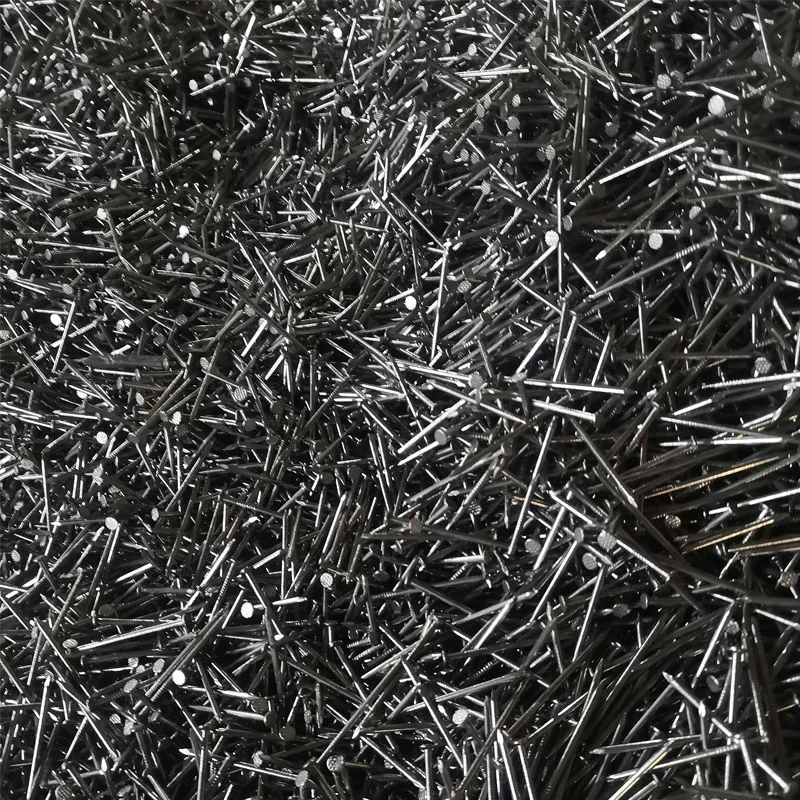Aug . 29, 2025 04:20 Back to list
Precision Pre-Cut Wire | Ready-to-Use & Straightened Solutions
Introduction to Precision pre cut wire Solutions
In modern industrial applications, efficiency, precision, and material optimization are paramount. The demand for components that arrive ready for integration, minimizing on-site processing and waste, has driven significant advancements in material supply chains. Among these innovations, pre cut wire stands out as a critical element for countless manufacturing and construction processes. Unlike traditional wire coils, which require labor-intensive straightening and cutting on-site, pre cut wire offers a high-precision, factory-finished solution that streamlines operations, enhances safety, and significantly reduces material waste.
This article provides an in-depth exploration of pre cut wire, examining its intricate manufacturing processes, technical specifications, diverse application scenarios, and the compelling advantages it offers across various industries. We will delve into industry trends, discuss vendor selection criteria, highlight customization opportunities, and present real-world case studies to underscore its value proposition. Our aim is to equip B2B decision-makers and technical engineers with comprehensive insights into leveraging straightened wire and straight cut wire for optimized performance and cost-efficiency.
The Advanced Manufacturing Process of Pre Cut Wire
The production of high-quality pre cut wire involves a sophisticated multi-stage process, meticulously controlled to ensure adherence to stringent technical specifications. This precision manufacturing workflow guarantees product integrity, consistency, and optimal performance in its intended applications.
1. Raw Material Selection and Preparation
The foundation of superior pre cut wire lies in the quality of its raw materials. Common materials include:
- Carbon Steel: Widely used for general construction and industrial applications due to its strength and cost-effectiveness. Grades often conform to ASTM A510 or equivalent standards.
- Stainless Steel: Offers excellent corrosion resistance and aesthetics, making it ideal for petrochemical, food processing, and marine environments. Grades like 304, 316, and 302 are common, adhering to ASTM A276 or ASTM A313.
- Galvanized Steel: Carbon steel coated with zinc for enhanced corrosion protection, suitable for outdoor and humid conditions, often specified by ASTM A641.
- Copper Alloys & Aluminum: Used for specific electrical conductivity or lightweight applications.
Materials are sourced from reputable mills, accompanied by Mill Test Certificates (MTCs) to verify chemical composition and mechanical properties.
2. Wire Drawing
The raw wire rod, typically larger in diameter, undergoes a cold drawing process. This involves pulling the wire through a series of dies with progressively smaller openings. This process reduces the wire's diameter, increases its tensile strength, improves surface finish, and enhances dimensional accuracy. Multiple drawing passes may be required to achieve the desired final diameter, with intermediate annealing steps to relieve internal stresses if necessary.
3. Annealing (Stress Relieving)
For certain applications requiring greater ductility or to remove work hardening induced by drawing, the wire may undergo annealing. This heat treatment process involves heating the wire to a specific temperature and then slowly cooling it, which recrystallizes the grain structure, making the wire softer and more pliable. This step is critical for ensuring the wire can be bent or formed without fracturing.
4. Straightening
This is a crucial stage for producing straightened wire. The wire, typically fed from a coil, passes through a series of rollers or rotators that mechanically remove any curvature or cast, ensuring it achieves a perfectly linear profile. Advanced straightening machines utilize precision-engineered rollers and sometimes dynamic tensioning systems to achieve optimal straightness, often measured in terms of deviation per meter.
5. Precision Cutting (CNC Machining)
Once straightened, the wire proceeds to the cutting station, where it is cut to precise, pre-defined lengths. Modern manufacturing facilities employ CNC (Computer Numerical Control) cutting machines to ensure exceptional length accuracy and repeatability. These machines can perform various cutting techniques, including shear cutting, abrasive cutting, or laser cutting, depending on the material and required end finish. Tolerances for length can be as tight as ±0.5 mm for critical applications, aligning with standards such as ISO 2768-1 for general tolerances or specific customer drawings.
6. Deburring and End Finishing
After cutting, the ends of the wire may have burrs or sharp edges. A deburring process, which can involve tumbling, grinding, or specialized end-finishing machines, is performed to create clean, smooth ends. This step is vital for safety, aesthetic appeal, and proper fitment in subsequent assembly operations.
7. Quality Inspection and Testing
Throughout the process, and especially at the final stage, rigorous quality control measures are implemented. This includes visual inspection for surface defects, dimensional checks (diameter, length, straightness), and mechanical testing such as tensile strength, yield strength, elongation, and hardness tests. Compliance with international standards like ISO 9001 (Quality Management System) and specific material standards (e.g., ASTM, ANSI, DIN, JIS) is non-negotiable, ensuring every batch of pre cut wire meets specified performance criteria.
8. Packaging
Finished pre cut wire is carefully packaged to prevent damage during transit. This can include bundling, boxing, or specialized crates, often with rust-preventative measures for ferrous materials. Proper labeling ensures traceability and easy identification.
Service Life and Target Industries
The service life of pre cut wire is highly dependent on its material composition, surface treatment, and the specific application environment. For instance, stainless steel straightened wire can offer decades of service in corrosive environments, while galvanized carbon steel provides substantial protection against rust in outdoor settings for 10-20 years. Typical target industries benefiting from pre cut wire include:
- Petrochemical: For instrument components, filters, and supports requiring corrosion resistance.
- Metallurgy: As internal components for specialized alloys or reinforcement.
- Water Supply & Drainage: For screen manufacturing, filter elements, and structural supports where corrosion resistance is critical.
- Construction: Rebar ties, concrete reinforcement, mesh manufacturing.
- Automotive: Fasteners, linkages, seat components, exhaust hangers.
- Appliance Manufacturing: Grills, racks, internal components.
- Agriculture: Fencing, trellises, crop support systems.
- Electrical & Electronics: Component leads, conductive elements, shielding.
Advantages in these scenarios include energy saving through reduced processing steps, superior corrosion resistance when appropriate materials are chosen, and enhanced overall operational efficiency.
Industry Trends and Market Dynamics for Pre Cut Wire
The market for straightened wire and straight cut wire is influenced by several evolving industry trends, driven by demands for increased efficiency, sustainability, and technological integration. Understanding these trends is crucial for businesses aiming to optimize their supply chains and product development.
- Automation and Lean Manufacturing: The global push towards automation and lean manufacturing principles across sectors like automotive, construction, and electronics is a primary driver. Pre cut wire minimizes manual handling and on-site processing, directly supporting automated assembly lines and reducing non-value-added activities. This trend is accelerating, with companies investing heavily in robotics and optimized material flow.
- Sustainability and Waste Reduction: Environmental concerns are increasingly influencing purchasing decisions. Pre cut wire solutions inherently reduce material scrap rates compared to bulk wire coils, where off-cuts and uneven lengths are common. This aligns with corporate sustainability goals and reduces waste disposal costs. The adoption of recycled content in wire manufacturing is also a growing trend, further enhancing the eco-friendliness of these products.
- High-Precision Requirements: Industries such as aerospace, medical devices, and precision engineering demand extremely tight tolerances for components. Straight cut wire, produced with advanced CNC cutting technology, can meet these rigorous requirements, offering accuracy far superior to manual cutting methods. This trend pushes manufacturers towards higher-grade materials and more sophisticated processing.
- Advanced Material Demand: There's a rising demand for pre cut wire made from specialized alloys, such as high-strength low-alloy (HSLA) steels, nickel-chromium alloys, and superalloys, to withstand extreme temperatures, corrosive environments, or high-stress applications. This diversification in material science expands the addressable market for custom wire solutions.
- Global Supply Chain Optimization: Businesses are seeking more resilient and efficient supply chains. Partnering with reliable suppliers of pre cut wire who can offer just-in-time (JIT) delivery and consistent quality reduces inventory holding costs and minimizes production delays, a critical factor post-global disruptions.
These trends collectively position pre cut wire as an indispensable component in modern industrial landscapes, emphasizing its role in achieving operational excellence and meeting evolving market demands.
Technical Specifications and Performance Parameters of Pre Cut Wire
The performance and suitability of pre cut wire for any given application are defined by a comprehensive set of technical specifications. These parameters are crucial for engineers and procurement specialists to ensure product compatibility and reliability.
Key Parameters Include:
- Diameter: Ranging from fine gauges (e.g., 0.5 mm) to heavy gauges (e.g., 10 mm or more), with tolerances typically specified per ISO 286-2 (IT grades) or ASTM A555 for wire and wire rods. Precision is critical for consistent fitment.
- Length and Length Tolerance: Standard lengths are common, but custom lengths are frequently ordered. Tolerances are paramount, often ±0.5 mm to ±2 mm depending on diameter and application. Strict adherence to specified length, aligning with ISO 2768-1 (Fine/Medium) is critical for automated assembly.
- Material Composition: Specifies the alloy type (e.g., AISI 1008 carbon steel, AISI 304 stainless steel) and its chemical breakdown, which dictates mechanical properties and corrosion resistance. Certified MTCs ensure traceability.
- Tensile Strength (UTS): The maximum stress a material can withstand while being stretched or pulled before breaking, measured in MPa (megapascals) or psi. Typical ranges for carbon steel can be 300-900 MPa, while stainless steel ranges from 500-1000 MPa, depending on grade and temper.
- Yield Strength: The stress at which a material begins to deform plastically (permanently). This is critical for structural applications where permanent deformation must be avoided.
- Elongation: A measure of a material's ductility, indicating how much it can stretch before fracturing, expressed as a percentage. Higher elongation means greater flexibility.
- Hardness: Resistance to indentation, often measured using Rockwell (HRB, HRC) or Vickers (HV) scales. Influences wear resistance and machinability.
- Surface Finish: Can be bright, matte, polished, or coated (e.g., galvanized, PVC-coated). Surface quality impacts aesthetics, corrosion resistance, and friction during assembly.
- Straightness: Measured as deviation over a specific length, typically 1 meter. For straightened wire, this is usually less than 1 mm/meter.
- End Finish: Specifies whether ends are burr-free, chamfered, or pointed, crucial for preventing snagging or facilitating insertion.
Typical Pre Cut Wire Product Specification Table:
| Parameter | Carbon Steel (ASTM A510, C1008) | Stainless Steel (AISI 304) | Galvanized Steel (ASTM A641) |
|---|---|---|---|
| Diameter Range | 1.0 mm - 10.0 mm | 0.8 mm - 8.0 mm | 1.5 mm - 6.0 mm |
| Length Tolerance | ±0.5 mm to ±2.0 mm (depending on length) | ±0.3 mm to ±1.5 mm | ±0.5 mm to ±2.0 mm |
| Tensile Strength (approx.) | 400-700 MPa | 520-720 MPa | 380-600 MPa |
| Yield Strength (approx.) | 280-500 MPa | 210-450 MPa | 250-400 MPa |
| Elongation (approx.) | 10-25% | 40-60% | 10-20% |
| Surface Finish | Bright, Clean, or Oiled | Bright Annealed, Polished | Zinc Coated |
| Straightness | < 1 mm/meter | < 0.5 mm/meter | < 1 mm/meter |
Note: These values are typical and may vary based on specific manufacturing processes, heat treatment, and customer requirements. Always refer to specific product data sheets for precise specifications.
Key Application Scenarios for Pre Cut Wire
The versatility and precision of pre cut wire make it an essential component across a multitude of industries. Its ability to arrive at the point of use in precise, ready-to-integrate lengths significantly reduces manufacturing time and costs.
- Construction and Infrastructure: Pre cut wire, especially rebar tie wire and concrete reinforcement wire, is extensively used. It ensures faster and more accurate tying of rebar cages, contributing to structural integrity. Galvanized straight cut wire is employed for fencing, gabions, and general construction supports, providing durability and corrosion resistance.
- Automotive Industry: Critical for various components, including seat frame reinforcements, exhaust hangers, cable linkages, spring elements, and various fastening applications. The strict length tolerances of straight cut wire are vital for automated assembly lines where consistency is non-negotiable.
- Appliance Manufacturing: Used in the production of household appliances for oven racks, dishwasher baskets, refrigerator shelving, and internal structural elements. Stainless steel or coated pre cut wire is preferred for its corrosion resistance and aesthetic appeal.
- Agriculture: For vineyard trellises, crop support systems, animal enclosures, and general farm fencing. Galvanized pre cut wire offers the necessary weather resistance and longevity in outdoor environments.
- Wire Mesh and Grating Fabrication: Manufacturers of wire mesh, grates, and screens utilize straightened wire as the primary input for weaving, welding, or crimping processes. The inherent straightness ensures uniform mesh openings and structural stability.
- Fastener and Pin Manufacturing: Used as raw material for cold heading or machining into specialized fasteners, pins, rivets, and dowels. The consistent diameter and length of pre cut wire reduce waste and improve throughput in these high-volume operations.
- Retail and Display Fixtures: For shelves, hooks, and various display components due to its clean finish and ease of fabrication.
- HVAC and Filtration Systems: As support elements for filters, screens, and grilles where robust, corrosion-resistant materials are required.
In each of these applications, the precision, material quality, and ready-to-use nature of pre cut wire translate directly into enhanced manufacturing efficiency, reduced operational costs, and superior end-product quality.
Technical Advantages of Pre Cut Wire Solutions
Adopting pre cut wire offers a multitude of technical and operational advantages over traditional wire coils, providing significant benefits for B2B enterprises:
- Unparalleled Precision and Consistency: Factory-level straightening and CNC cutting ensure each piece of straightened wire has exact dimensions and straightness, minimizing variability. This consistency is crucial for automated assembly lines and mass production, where even minor deviations can lead to production stoppages or defects.
- Enhanced Manufacturing Efficiency: By eliminating the need for on-site straightening and cutting, pre cut wire significantly reduces preparation time. This allows for faster material handling, quicker assembly cycles, and increased throughput, directly contributing to higher overall equipment effectiveness (OEE).
- Substantial Waste Reduction: Processing bulk wire coils often results in significant scrap due to end-of-coil waste, straightening losses, and cutting inaccuracies. Pre cut wire is optimized for material utilization, leading to a leaner production process and reduced raw material costs and waste disposal expenses. Industry data suggests scrap reduction can be up to 15-20% for certain applications.
- Improved Workplace Safety: On-site wire cutting operations pose risks such as cuts, strains, and repetitive stress injuries. By supplying ready-to-use pre cut wire, these hazards are transferred to specialized manufacturing environments with stringent safety protocols, thereby enhancing safety in the client's facility.
- Cost-Effectiveness: While the unit cost per meter of pre cut wire might appear slightly higher than bulk wire, the total cost of ownership is often significantly lower. This is due to reduced labor costs for processing, lower scrap rates, faster production times, and fewer quality control issues. A comprehensive cost analysis frequently reveals substantial savings.
- Optimized Inventory Management: Straight cut wire can be ordered in specific quantities and lengths, allowing for more precise inventory control. This supports Just-In-Time (JIT) delivery systems, reducing warehousing costs and capital tied up in inventory.
- Superior Material Properties: During the manufacturing process, advanced heat treatments like annealing and controlled drawing can be applied to optimize the mechanical properties of the wire, such as tensile strength, ductility, and fatigue resistance, tailored to specific application requirements.
- Corrosion Resistance and Durability: Depending on the material chosen (e.g., stainless steel, galvanized steel, PVC-coated), pre cut wire offers superior resistance to corrosion, abrasion, and environmental degradation, extending the service life of end products in challenging conditions. This results in reduced maintenance and replacement costs.
These advantages collectively translate into a compelling value proposition for any industrial application seeking to enhance its operational efficiency, reduce costs, and improve product quality by integrating high-quality pre cut wire.
Vendor Selection and Comparison for Pre Cut Wire
Selecting the right supplier for pre cut wire is a strategic decision that impacts product quality, operational efficiency, and overall project costs. A thorough evaluation process is essential to partner with a vendor that can consistently meet stringent B2B demands.
Key Vendor Comparison Criteria:
- Quality Certifications: Look for vendors with ISO 9001 certification, demonstrating a robust quality management system. Adherence to material standards (ASTM, DIN, JIS) and product-specific certifications (e.g., CE marking) is crucial.
- Material Sourcing and Traceability: A reliable vendor should provide full traceability of raw materials, including Mill Test Certificates (MTCs), ensuring the authenticity and quality of the base wire.
- Customization Capabilities: Evaluate the vendor's ability to produce pre cut wire to precise, custom lengths, diameters, and materials, including specialized coatings or end finishes. Flexibility in meeting unique project specifications is a significant advantage.
- Production Capacity and Lead Times: Assess the vendor's capacity to handle your order volume and their typical lead times. The ability to fulfill large orders consistently and deliver on schedule is paramount for maintaining your production flow.
- Technical Expertise and Support: A strong vendor offers expert technical advice, assisting with material selection, specification optimization, and troubleshooting. Proactive communication and responsiveness are key.
- Quality Control Processes: Inquire about their in-house QC procedures, including visual inspection, dimensional checks, and mechanical testing (tensile, yield, hardness). Evidence of rigorous testing standards builds trust.
- Packaging and Logistics: Effective packaging to prevent damage during transit and reliable logistics support for timely delivery are critical.
- Reputation and References: Seek out vendor reputation, customer testimonials, and case studies. References from long-term clients in your industry can provide valuable insights.
- Pricing Structure: While not the sole determinant, a competitive and transparent pricing model, including volume discounts and clear terms, is important. Evaluate total cost of ownership, not just unit price.
Vendor Comparison Matrix Example:
| Criteria | Leading Specialist Vendor | General Wire Distributor | In-house Processing |
|---|---|---|---|
| Quality & Certifications | Excellent (ISO 9001, MTCs) | Good (Basic QC) | Variable (Dependent on internal resources) |
| Precision & Tolerances | Very High (±0.3 mm typical) | Moderate (±1-2 mm typical) | Dependent on machinery & skill |
| Customization Options | Extensive (materials, lengths, finishes) | Limited (standard sizes) | High, but costly setup |
| Lead Times (Typical) | Short to Moderate (JIT possible) | Moderate to Long (stock-dependent) | Immediate, but production capacity drain |
| Cost Efficiency (TCO) | High (Reduced labor, waste) | Moderate (Hidden processing costs) | Low (High labor, equipment, waste) |
| Technical Support | Excellent (Engineering consultation) | Basic | Internal expertise required |
Partnering with a specialized pre cut wire manufacturer, particularly one with decades of experience, ensures access to superior product quality, technical expertise, and flexible solutions, ultimately contributing to a more robust and efficient manufacturing process.
Customized Solutions for Pre Cut Wire Applications
While standard sizes and materials for pre cut wire cater to many general applications, the true value for specialized industries often lies in customized solutions. Reputable manufacturers excel at tailoring straightened wire to exact client specifications, ensuring optimal performance and seamless integration into complex systems.
Customization options for pre cut wire typically include:
- Specific Lengths and Diameters: Beyond standard ranges, manufacturers can produce straight cut wire in highly specific lengths (e.g., down to sub-millimeter precision) and uncommon diameters, critical for specialized machinery or unique structural designs.
- Material Grades and Alloys: Access to a broader spectrum of materials, including exotic alloys, specific stainless steel grades (e.g., 316L, 430), high-carbon steels, or non-ferrous options like brass or aluminum, to meet demanding environmental or mechanical requirements.
- Surface Coatings and Treatments: Custom coatings can significantly enhance functionality. Options include various levels of galvanization (hot-dip, electro), PVC coating for insulation or color-coding, passivation for stainless steel to boost corrosion resistance (as per ASTM A967), or specialized lubricants for specific forming processes.
- End Finishing: Tailored end preparations such as chamfered ends, radiused ends, pointed tips, or precision deburring can facilitate easier insertion, prevent damage to mating components, and improve safety.
- Mechanical Properties: Through controlled annealing and drawing processes, the final mechanical properties (tensile strength, yield strength, ductility) can be adjusted within certain limits to match exact stress requirements of an application.
- Packaging Solutions: Customized packaging, including specific bundle sizes, protective wraps, or returnable crates, designed to integrate smoothly with client's logistics and internal material handling systems.
Engaging with a vendor capable of comprehensive customized solutions ensures that the pre cut wire you receive is not just a component, but a perfectly engineered part of your larger system, optimizing performance and eliminating the need for costly in-house modifications. This level of partnership is invaluable for innovative product development and complex engineering projects.
Real-World Application Case Studies for Pre Cut Wire
These case studies illustrate the tangible benefits derived from integrating high-quality pre cut wire into diverse industrial applications.
Case Study 1: Automotive Seat Frame Manufacturing
A leading global automotive component manufacturer faced challenges with its seat frame production. The process involved manually cutting and straightening long coils of mild steel wire for various cross-member and structural support elements. This led to significant material waste, inconsistent part lengths, and increased labor costs, impacting their Just-In-Time (JIT) assembly line efficiency. The inconsistency also led to welding defects and rework.
Solution: The manufacturer switched to precisely engineered pre cut wire, delivered in exact lengths and specified diameters, made from high-strength carbon steel. The wire was pre-straightened to a tolerance of less than 0.5 mm/meter and supplied with deburred ends, ready for automated feeding into robotic welding cells.
Results:
- 30% Reduction in Labor Costs: Eliminated two full-time equivalent (FTE) positions previously dedicated to wire preparation.
- 18% Decrease in Material Waste: Scrap rates dropped significantly due to precise cuts and zero end-of-coil waste.
- 15% Increase in Production Throughput: Automated welding lines operated with fewer interruptions and higher consistency, leading to faster completion times.
- Improved Product Quality: Reduced welding defects and enhanced dimensional accuracy of final seat frames.
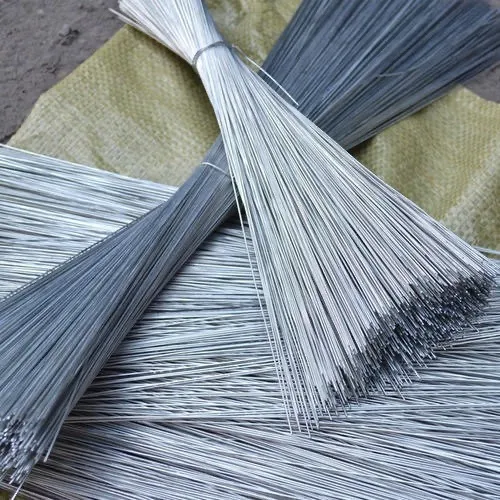
Case Study 2: Petrochemical Filter Element Production
A company specializing in advanced filtration systems for the petrochemical industry required precise stainless steel rods for the internal support structure of their high-pressure filter elements. The application demanded excellent corrosion resistance and robust mechanical properties, operating in harsh chemical environments. In-house processing of stainless steel coils proved challenging, with difficulties in maintaining straightness and achieving burr-free ends, critical for preventing contamination and ensuring filter integrity.
Solution: The company partnered with a supplier offering custom-cut AISI 316L stainless steel straightened wire. The wire was provided in specific lengths (±0.2 mm tolerance), highly polished for smooth surface finish (to prevent particle adhesion), and passivated according to ASTM A967 for enhanced corrosion resistance. Each piece was also rigorously deburred to ensure no loose particles could enter the filtration system.
Results:
- Zero Defects from Wire Components: The consistent quality and precise specifications eliminated assembly issues and potential filter failures related to wire components.
- Extended Product Lifespan: Passivation and high-quality material led to superior corrosion resistance, increasing the lifespan of their filter elements in aggressive chemical environments.
- Accelerated Product Development: Reduced time spent on material preparation allowed engineers to focus more on core product innovation.
- Compliance Assurance: Strict adherence to material and processing standards provided confidence for regulatory compliance in critical applications.
Ensuring Quality and Compliance: A Foundation of Trust ()
For B2B clients, especially those in critical industries, trust in a supplier's expertise, authoritativeness, and trustworthiness is paramount. A reputable pre cut wire manufacturer builds this trust through rigorous quality management, transparent processes, and commitment to industry standards.
Certifications and Standards:
Leading manufacturers adhere to international quality standards, such as:
- ISO 9001: Certification for Quality Management Systems, ensuring consistent processes from raw material procurement to final product delivery.
- ASTM International Standards: Compliance with specific ASTM standards for material composition (e.g., ASTM A510 for carbon steel, ASTM A276/A313 for stainless steel), mechanical properties, and testing methods.
- ANSI, DIN, JIS: Adherence to national and international dimensional and material specifications as required by diverse markets.
- CE Marking: For products intended for the European Economic Area, indicating conformity with health, safety, and environmental protection standards.
Quality Control and Testing Protocols:
A multi-stage quality control process is vital:
- Incoming Material Inspection: Verification of raw materials against MTCs and internal quality benchmarks.
- In-Process Monitoring: Continuous checks on wire diameter, straightness, and surface quality during drawing, straightening, and cutting.
- Final Product Inspection: Comprehensive dimensional checks (length, diameter, end finish) and visual inspection for surface defects.
- Mechanical Testing: Regular destructive and non-destructive testing, including tensile strength, yield strength, elongation, and hardness tests, performed in accredited laboratories.
- Traceability: Batch numbers and comprehensive records allow for full traceability from finished pre cut wire back to its raw material source.
Authoritative Experience and Partnerships:
Companies with decades of specialized experience in wire processing demonstrate deep expertise. Partnerships with leading manufacturers in critical sectors (e.g., automotive Tier 1 suppliers, major construction firms, petrochemical giants) attest to a vendor's reliability and capability. Demonstrable years of service in the industry and a portfolio of successful, long-term client relationships speak volumes about their authoritativeness.
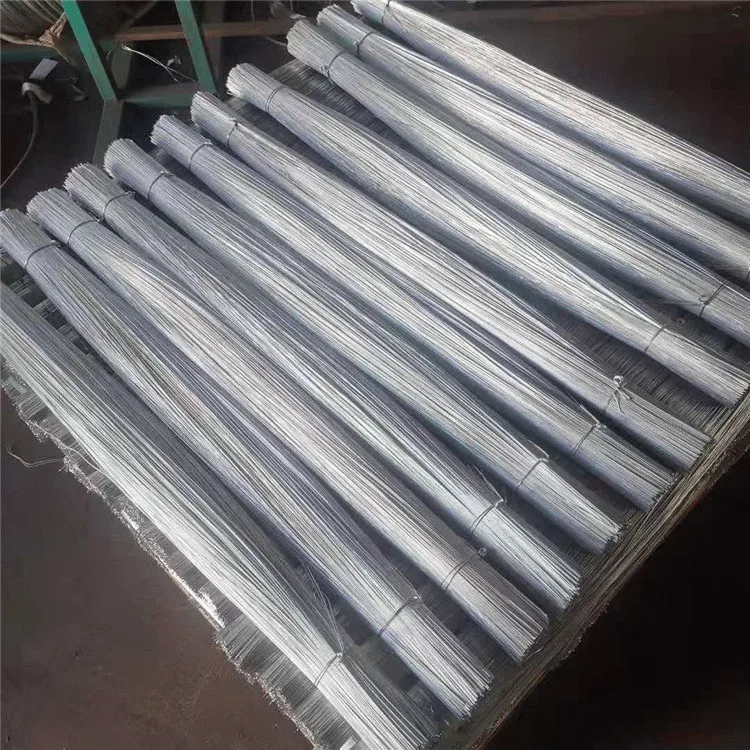
Trustworthiness: FAQs, Lead Times, Warranty, and Support
Transparency and reliable service are cornerstones of trustworthiness in B2B partnerships. Addressing common inquiries and clearly outlining operational commitments are vital.
Frequently Asked Questions (FAQs) about Pre Cut Wire:
Q: What materials are available for pre cut wire?
A: We offer a wide range including carbon steel (mild steel, high-carbon steel), various grades of stainless steel (e.g., 304, 316, 316L), galvanized steel, and select non-ferrous options like aluminum or copper alloys, subject to specific project requirements.
Q: What are the typical length and diameter tolerances you can achieve for straightened wire?
A: Our state-of-the-art CNC machinery allows for exceptional precision. Diameter tolerances typically adhere to industry standards like ASTM A555/A555M, while length tolerances can be as tight as ±0.2 mm for smaller diameters and shorter lengths, depending on material and specific application.
Q: Can you provide custom end finishes for straight cut wire?
A: Yes, we offer various end finishes including burr-free, chamfered, radiused, or pointed ends to facilitate your specific assembly or application needs. These are performed with precision deburring equipment to ensure clean, safe handling.
Q: How do you ensure the straightness of the wire?
A: Our advanced straightening machines utilize multiple sets of precision rollers and tensioning systems to remove wire cast and achieve optimal linearity. Straightness is measured using optical sensors and physical gauges, typically specified as a maximum deviation over a one-meter length (e.g.,
Lead Time and Fulfillment Details:
Standard orders for common materials and dimensions typically have a lead time of 2-4 weeks. Expedited services are available for urgent requirements, depending on material availability and current production schedules. Custom orders involving specialized materials or complex processing may require 4-8 weeks. We maintain robust supply chain relationships and substantial raw material inventory to minimize potential delays and offer reliable delivery schedules, supporting Just-In-Time (JIT) delivery systems for qualified partners.
Warranty Commitments:
All our pre cut wire products come with a standard 12-month warranty against manufacturing defects in material and workmanship from the date of shipment. This warranty ensures that products meet the agreed-upon specifications and industry standards. In the unlikely event of a quality issue, our dedicated support team will conduct a thorough investigation and provide appropriate remedies, including replacement or credit, in accordance with our terms and conditions.
Customer Support Information:
Our expert technical sales team and dedicated customer service representatives are available to assist with inquiries, quotations, technical specifications, and order tracking. We offer:
- Technical Consultation: Guidance on material selection, design optimization, and application-specific requirements for your straightened wire.
- Responsive Communication: Prompt replies to emails and phone calls, ensuring you receive timely information.
- After-Sales Support: Assistance with any post-delivery concerns, ensuring complete satisfaction with your pre cut wire order.
You can reach us via phone during business hours or email for inquiries. Our commitment is to provide not just products, but comprehensive solutions and unwavering support.
Conclusion
Pre cut wire represents a significant advancement in material supply, offering unparalleled precision, efficiency, and cost-effectiveness for a broad spectrum of industrial applications. By understanding its detailed manufacturing process, embracing industry trends, and leveraging technical advantages, B2B decision-makers can optimize their operations. Partnering with a reputable vendor capable of delivering customized solutions and backed by robust quality control and customer support is crucial for unlocking the full potential of straightened wire and straight cut wire. This strategic component is more than just raw material; it is a catalyst for improved productivity, reduced waste, and enhanced product quality in a competitive global market.
References
- ASTM International. "Standard Specifications for Carbon Steel Wire Rods and Coarse Round Wire." ASTM A510/A510M.
- ASTM International. "Standard Specification for Stainless Steel Wire and Wire Rods for Cold Heading and Cold Forging." ASTM A493/A493M.
- International Organization for Standardization. "Geometrical Product Specifications (GPS) - General tolerances - Part 1: Tolerances for linear and angular dimensions." ISO 2768-1.
- Kalpakjian, S., & Schmid, S. R. (2014). Manufacturing Engineering and Technology. Pearson Education.
- Smith, W. F., & Hashemi, J. (2006). Foundations of Materials Science and Engineering. McGraw-Hill.
- ASM International. (2002). ASM Handbook: Volume 14B, Metalworking: Sheet Forming. ASM International.
-
Pre Cut Wire - Straightened, Deburred, Custom Lengths
NewsNov.17,2025
-
Binding Wire for Sale - Durable, Rust-Resistant, Bulk Deals
NewsNov.17,2025
-
Field Fencing for Horses – Safe, Durable, Easy Install
NewsNov.17,2025
-
Euro Fence Factory: Durable, Custom Euro Style Fences
NewsNov.17,2025
-
Euro Fence Factory: Durable OEM Panels, Direct Pricing
NewsNov.17,2025
-
Chain Link Fence Suppliers | Galvanized, Factory-Direct
NewsNov.11,2025


